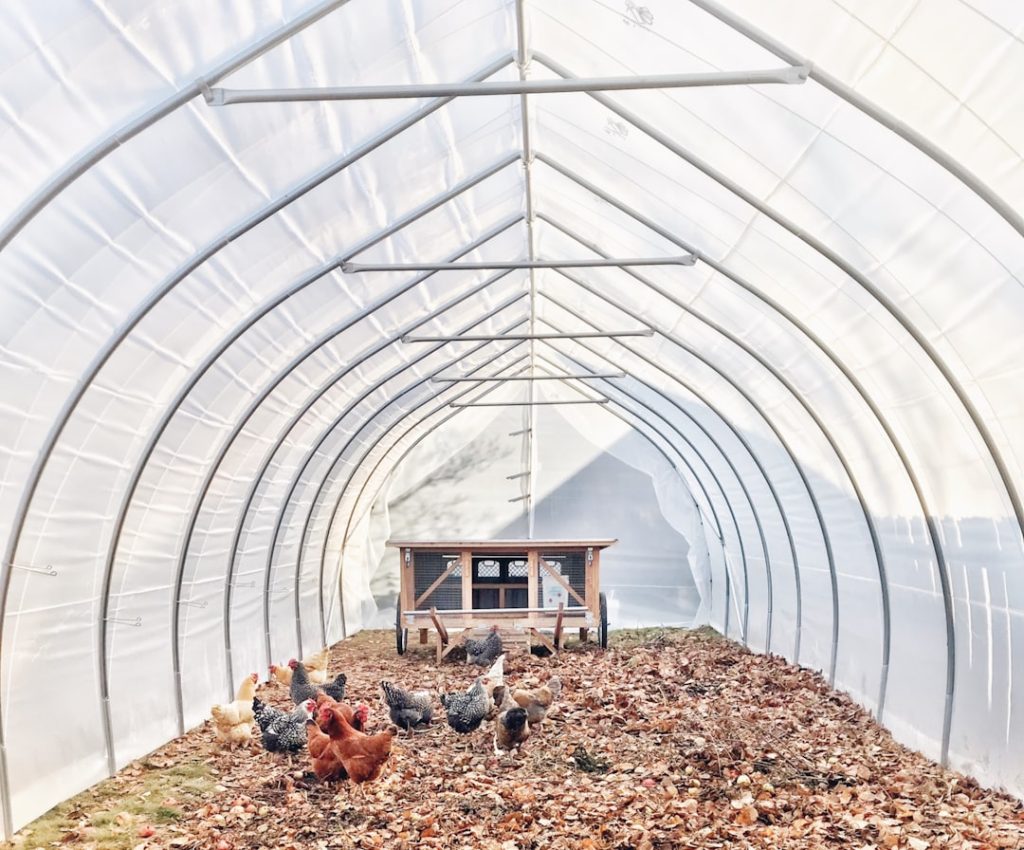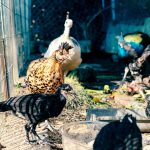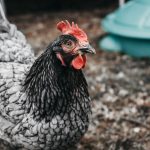Coyotes (Canis latrans) are highly adaptable canids native to North America. These opportunistic predators have successfully expanded their range to include both rural and urban environments. Coyotes are primarily nocturnal, with peak activity occurring during twilight and nighttime hours.
This behavior pattern coincides with periods when chickens are most vulnerable. Coyotes possess physical attributes that make them effective hunters of small livestock. Their strong legs and sharp claws enable them to dig under fences and climb over barriers.
Additionally, coyotes are known for their intelligence and problem-solving abilities, which allow them to overcome many common deterrents. Territoriality is a key aspect of coyote behavior. Once a food source is identified, such as a chicken coop, coyotes may repeatedly return to the area.
This persistent behavior can pose ongoing challenges for poultry owners. While coyotes are often solitary hunters, they can also hunt in family groups or packs. Pack hunting behavior increases their effectiveness in overwhelming prey and circumventing protective measures.
This cooperative strategy can make coyotes particularly dangerous to domestic fowl, even in seemingly secure enclosures. Understanding coyote ecology, behavior, and hunting strategies is essential for developing effective protection measures for chickens and other small livestock. Implementing a combination of physical barriers, deterrents, and management practices is typically necessary to mitigate the risk posed by these adaptable predators.
Table of Contents
- 1 Securing the coop: Tips for building a predator-proof chicken coop
- 2 Nighttime protection: Implementing measures to keep chickens safe after dark
- 3 Safe free-ranging: Strategies for allowing chickens to roam while minimizing risk
- 4 Guard animals: Using dogs or other animals to protect chickens from coyotes
- 5 Deterrents and repellents: Options for discouraging coyotes from approaching the coop
- 6 Emergency response: What to do if a coyote is spotted near the chicken coop
- 7 FAQs
Key Takeaways
- Coyotes are intelligent and adaptable predators that are known to be opportunistic and will take advantage of any easy food source, including chickens.
- Building a predator-proof chicken coop involves using sturdy materials, burying wire mesh to prevent digging, and securing all openings with locks or latches.
- Implementing measures such as installing motion-activated lights, using automatic coop doors, and keeping chickens in a secure run at night can help protect them from coyote attacks.
- Allowing chickens to free-range can be done safely by using chicken tractors, supervising their outdoor time, and using fencing or netting to create a secure area.
- Guard animals such as dogs or llamas can be effective in deterring coyotes from approaching the coop and protecting the chickens.
- Deterrents and repellents such as predator urine, noise makers, and chemical sprays can be used to discourage coyotes from coming near the coop.
- If a coyote is spotted near the chicken coop, it’s important to make loud noises, throw objects, and try to scare it away, as well as contacting local wildlife authorities for assistance.
Securing the coop: Tips for building a predator-proof chicken coop
Materials and Construction
When constructing a coop, it’s essential to use sturdy materials such as hardware cloth or welded wire to prevent coyotes from gaining access. The wire should be buried at least 12 inches into the ground to prevent digging, and it should also be extended outward at an angle to deter climbing.
Securing Openings and Gaps
All openings should be secured with heavy-duty latches and locks to prevent coyotes from forcing their way in. It’s also crucial to inspect the entire structure for any potential entry points and reinforce them as needed. This will ensure that there are no gaps or weak points where coyotes could potentially gain access.
Coop Design and Layout
The design and layout of the coop are critical in preventing coyote attacks. The coop should be elevated off the ground to prevent easy access for coyotes, and it should also be surrounded by a secure perimeter fence to provide an additional layer of protection. Additionally, consider the placement of food and water sources within the coop to minimize the risk of attracting coyotes. By taking these measures, you can significantly reduce the risk of coyote attacks on your chickens.
Nighttime protection: Implementing measures to keep chickens safe after dark
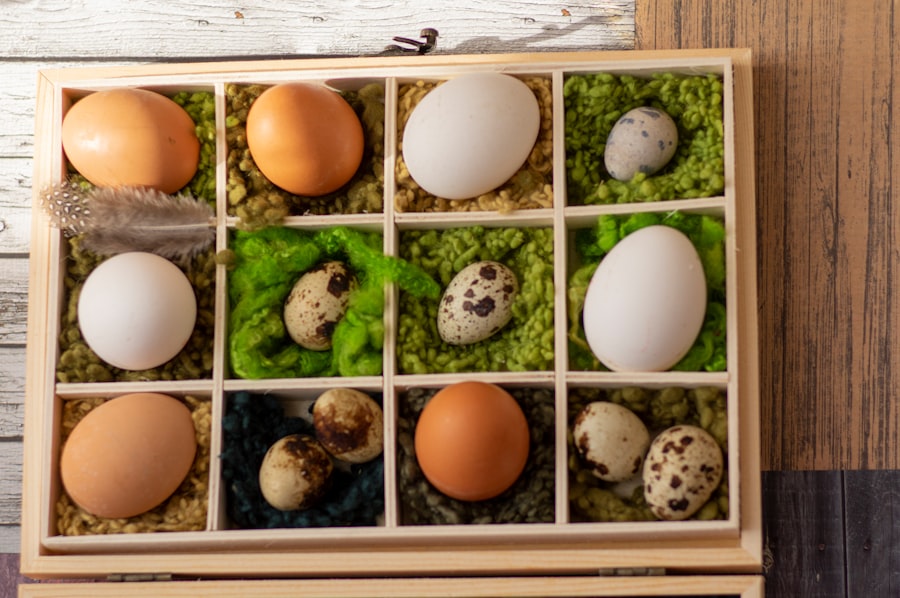
Implementing measures to keep chickens safe after dark is crucial for protecting them from coyote attacks. One effective strategy is to install motion-activated lights around the perimeter of the coop and surrounding area. These lights can help deter coyotes by startling them and making them feel exposed.
Additionally, the sudden illumination can make it easier for you to spot any potential threats and take action to protect your chickens. Another important measure for nighttime protection is using sound deterrents such as motion-activated alarms or even radios set to loud talk stations. These types of deterrents can startle coyotes and make them think twice about approaching the coop.
Additionally, some people have found success with using predator calls or recordings of aggressive animal noises to deter coyotes from coming near the coop. In addition to lights and sound deterrents, it’s also important to consider the presence of guard animals such as dogs or even llamas or donkeys. These animals can serve as an additional line of defense against coyote attacks by alerting you to potential threats and deterring coyotes from approaching the coop.
By implementing these measures, you can significantly reduce the risk of nighttime coyote attacks on your chickens.
Safe free-ranging: Strategies for allowing chickens to roam while minimizing risk
Allowing chickens to free-range can provide numerous benefits, but it also comes with risks, especially when it comes to coyote attacks. To minimize these risks, it’s important to implement strategies that allow chickens to roam safely while still providing protection from predators. One effective strategy is using portable electric fencing to create a secure area for chickens to free-range during the day.
This type of fencing can be easily moved around to provide fresh grazing areas while still providing protection from coyotes. Another strategy for safe free-ranging is using chicken tractors or mobile coops that can be moved around the property. These structures provide a secure environment for chickens to roam while still providing protection from predators such as coyotes.
By moving these structures regularly, you can help prevent coyotes from learning the patterns of your chickens’ movements and reduce the risk of attacks. In addition to portable fencing and mobile coops, it’s also important to consider the use of guard animals such as dogs or other livestock. These animals can help protect free-ranging chickens by deterring coyotes and alerting you to potential threats.
By implementing these strategies, you can allow your chickens to free-range while minimizing the risk of coyote attacks.
Guard animals: Using dogs or other animals to protect chickens from coyotes
Using guard animals such as dogs or other livestock can be an effective way to protect chickens from coyote attacks. Dogs are particularly well-suited for this role, as they have a natural instinct to protect their territory and can serve as an effective deterrent against coyotes. Breeds such as Great Pyrenees, Anatolian Shepherds, and Akbash dogs are known for their ability to protect livestock from predators and can be trained to protect chickens as well.
In addition to dogs, other animals such as llamas or donkeys can also serve as effective guard animals for protecting chickens from coyotes. These animals have a natural instinct to protect their herd or flock and can help deter coyotes from approaching the coop or free-ranging area. By introducing these animals into your flock, you can provide an additional layer of protection against coyote attacks.
When using guard animals to protect chickens from coyotes, it’s important to provide proper training and supervision to ensure that they are effective in their role. Additionally, it’s important to consider the specific needs and behaviors of the guard animal breed you choose and provide them with appropriate care and living conditions. By using guard animals in conjunction with other protective measures, you can significantly reduce the risk of coyote attacks on your chickens.
Deterrents and repellents: Options for discouraging coyotes from approaching the coop
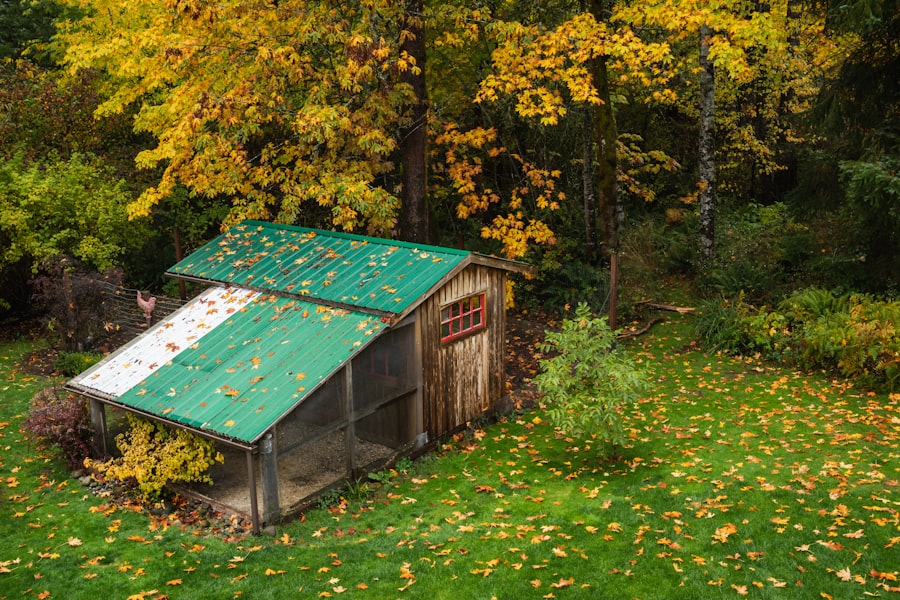
Motion-Activated Sprinkler Systems
One effective option for discouraging coyotes is using motion-activated sprinkler systems that release a sudden burst of water when triggered by movement. These systems can startle coyotes and make them think twice about approaching the coop, providing an effective deterrent against potential attacks.
Scent-Based Repellents
Another option for discouraging coyotes is using scent-based repellents such as predator urine or commercial repellent sprays. These products can create a barrier around the coop that deters coyotes from approaching by mimicking the scent of potential predators or creating an unpleasant odor that repels them. Additionally, some people have found success with using homemade repellents such as garlic or chili pepper sprays applied around the perimeter of the coop.
Visual Deterrents
In addition to sprinkler systems and scent-based repellents, it’s also important to consider the use of visual deterrents such as scarecrows or reflective tape. These types of deterrents can startle coyotes and make them think twice about approaching the coop by creating an unfamiliar or threatening environment.
Combining Deterrents for Maximum Effectiveness
By using these options in combination with other protective measures, you can effectively discourage coyotes from approaching the chicken coop.
Emergency response: What to do if a coyote is spotted near the chicken coop
If a coyote is spotted near the chicken coop, it’s important to take immediate action to protect your flock. One important step is to make loud noises or use sound deterrents such as air horns or whistles to startle the coyote and make it think twice about approaching the coop. Additionally, turning on bright lights or shining flashlights in the direction of the coyote can help deter it from coming closer.
Another important measure is to ensure that all doors and openings to the coop are securely locked to prevent the coyote from gaining access. If possible, it’s also important to gather your flock into a secure area within the coop or surrounding structure where they can be protected from potential attacks. In addition to these immediate measures, it’s also important to consider long-term strategies for preventing future encounters with coyotes.
This may include reinforcing the security of the coop, implementing additional deterrents such as motion-activated lights or sound alarms, or considering the use of guard animals for added protection. In conclusion, protecting chickens from coyote attacks requires a multi-faceted approach that includes understanding coyote behavior and habits, securing the coop with predator-proof measures, implementing nighttime protection strategies, allowing safe free-ranging with protective measures in place, using guard animals for added protection, utilizing deterrents and repellents, and knowing how to respond in emergency situations. By taking these measures into consideration and implementing them effectively, you can significantly reduce the risk of coyote attacks on your flock and provide them with a safe and secure environment in which to thrive.
If you’re looking for ways to keep your chickens safe from coyotes, you may want to check out this article on 10 tips for building a secure chicken coop. It offers valuable advice on how to fortify your coop to protect your flock from predators like coyotes.
FAQs
What are some ways to keep chickens safe from coyotes?
Some ways to keep chickens safe from coyotes include building a secure coop and run, using electric fencing, installing motion-activated lights or sound devices, and keeping a livestock guardian animal such as a dog or llama.
Why are coyotes a threat to chickens?
Coyotes are a threat to chickens because they are opportunistic predators that will prey on small animals, including chickens, if given the opportunity. They are known to be skilled hunters and can easily access unprotected chicken coops and runs.
How can electric fencing help keep chickens safe from coyotes?
Electric fencing can help keep chickens safe from coyotes by creating a barrier that delivers a mild electric shock to any predator that tries to breach it. This can deter coyotes and other predators from attempting to access the chicken coop or run.
What are some signs that a coyote is in the area?
Some signs that a coyote is in the area include tracks, scat, howling or yipping sounds, and sightings of the animal itself. It’s important to be aware of these signs and take precautions to protect chickens from potential coyote attacks.
Are there any natural deterrents to keep coyotes away from chickens?
Some natural deterrents to keep coyotes away from chickens include using strong-smelling substances such as predator urine or citrus peels, as well as planting thorny bushes or installing prickly plants around the perimeter of the chicken coop and run. These can help deter coyotes from approaching the area.
Meet Walter, the feathered-friend fanatic of Florida! Nestled in the sunshine state, Walter struts through life with his feathered companions, clucking his way to happiness. With a coop that’s fancier than a five-star hotel, he’s the Don Juan of the chicken world. When he’s not teaching his hens to do the cha-cha, you’ll find him in a heated debate with his prized rooster, Sir Clucks-a-Lot. Walter’s poultry passion is no yolk; he’s the sunny-side-up guy you never knew you needed in your flock of friends!

